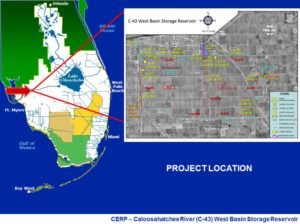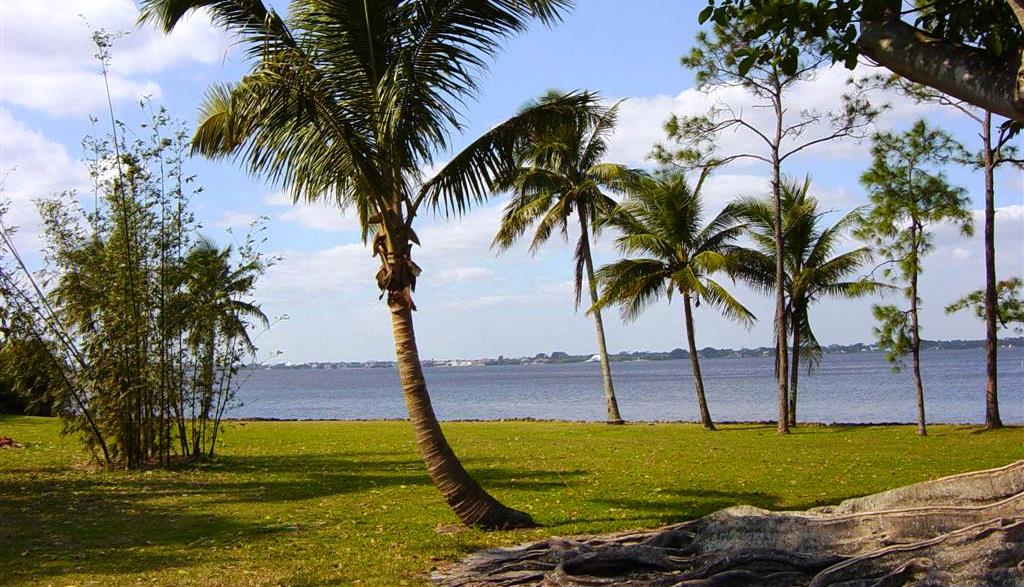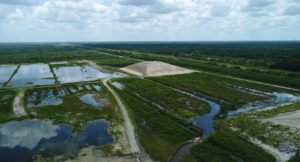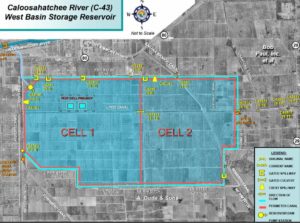Tom McKernan stands at the highest point in Hendry County, Florida, looking down on a road that bears his name. McKernan Highway is not long for this world.
Within a few years, it and other roads crisscrossing more than 10,000 acres just south of the Caloosahatchee River will be under 20 feet of water.
The road network is a first step in the construction of the massive C-43 reservoir, likely the largest project ever undertaken in the South Florida Water Management District (SFWMD). The reservoir will be a key component in the plan to restore the Everglades to something closer to its natural state.
At 18 square miles — larger than Naples — the expanse of the reservoir will be breathtaking. The hundreds of pieces of heavy equipment that soon will be putting 16 million cubic yards of dirt in precise formations around the reservoir’s 19-mile perimeter will need roads with names for the drivers to find their way around, McKernan said.
At the end of a summer marked by headlines of blue-green algae and red tide fouling the waters of Lee and Collier counties, McKernan and his colleagues at the water district are eager to show off their work at the C-43.
It won’t be finished until 2022, leading to frustration from residents and businesses fed up with the noxious blooms that undermine Southwest Florida’s vaunted quality of life and tourism trade.
 Congress authorized the Caloosahatchee River (C-43) West Basin Storage Reservoir Project in the Water Resources Reform Development Act (WRRDA) of 2014. This project is a component of the Comprehensive Everglades Restoration Plan (CERP).
Congress authorized the Caloosahatchee River (C-43) West Basin Storage Reservoir Project in the Water Resources Reform Development Act (WRRDA) of 2014. This project is a component of the Comprehensive Everglades Restoration Plan (CERP).
The project is designed to capture excess C-43 Basin runoff and regulatory releases from Lake Okeechobee during the wet season and release water from the reservoir during the dry season. The project includes development of one above-ground reservoir with a total storage capacity of approximately 170,000 acre-feet (ac-ft).
The reservoir will be located in the C-43 Basin in Hendry County. The project will reduce the extreme salinity changes in the Caloosahatchee River Estuary by providing a more consistent flow of water discharging into the estuary. The project will also provide water supply benefits and some flood attenuation.
The Comprehensive Everglades Restoration Plan (CERP was authorized by Congress in 2000 as a plan to “restore, preserve, and protect the south Florida ecosystem while providing for other water-related needs of the region, including water supply and flood protection.” At a cost of more than $10.5 billion and with a 35+ year time-line, this is the largest hydrologic restoration project ever undertaken in the United States.
A unique Federal / State partnership guides the interagency plan. The South Florida Natural Resources Center (SFNRC) has a critical role to play in this partnership by ensuring that the mission of the National Park Service — to protect park resources unimpaired for future generations — remains at the forefront of CERP decision-making. SFNRC involvement in CERP supports Big Cypress National Preserve and Everglades and Biscayne National Parks.
SFNRC staff are participating in the Central Everglades Planning Project, a fast-track planning effort for the next generation that will, when authorized by Congress, improve the Central and Southern Everglades by putting more fresh and clean water into the River of Grass.
Featured photo of Caloosahatchee River by Mathew Townsend via Wikipedia.
See article by Brent Batten in the Naples Daily News.



